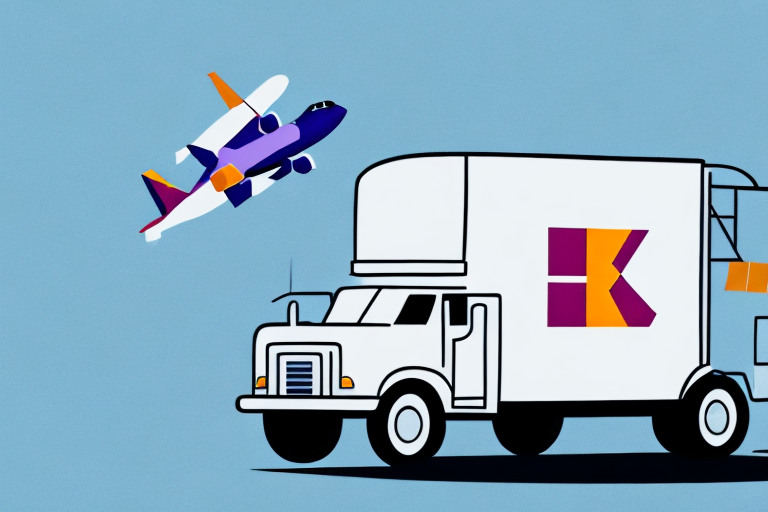Understanding Carriage Value with FedEx
FedEx is a leading global courier service that provides reliable and efficient shipping solutions to businesses and individuals worldwide. A crucial aspect of shipping with FedEx is understanding its carriage value, which determines the level of liability the company assumes in case of loss, damage, or delay of the shipment. This article delves into the details of FedEx's carriage value and explores the various factors that influence it.
What is Carriage Value?
The carriage value of a shipment refers to the amount that FedEx agrees to carry from one location to another. Unlike the declared value, which represents the actual worth of the goods being shipped, the carriage value is used to determine FedEx's liability coverage. Selecting the appropriate carriage value is essential to ensure adequate protection for your shipment.
Carriage Value vs. Declared Value
While both carriage value and declared value pertain to the shipment's worth, they serve different purposes. The declared value is the true value of the goods and is used to determine insurance coverage in case of loss or damage. In contrast, the carriage value is a separate figure that FedEx uses to assess liability. It's important to accurately record and agree upon both values before shipping to avoid unforeseen costs or insufficient coverage.
Factors Influencing FedEx's Carriage Value
Several factors determine the carriage value of a shipment with FedEx. Understanding these can help you make informed decisions and optimize your shipping costs.
Type and Value of Goods
The nature of the goods being shipped significantly impacts the carriage value. Fragile or high-value items typically require a higher carriage value to ensure greater liability coverage. For example, shipping electronics or luxury items would necessitate a higher carriage value compared to sending standard office supplies.
Shipment Size and Weight
Larger and heavier shipments may incur higher carriage values due to the increased risk and handling requirements. FedEx assesses the dimensions and weight of the package to determine the appropriate carriage value, as oversized or heavy items may require specialized equipment or handling.
Destination and Mode of Transport
The shipment's destination and the chosen mode of transportation also play a role in determining the carriage value. International shipments may be subject to customs regulations and duties, affecting the overall cost. Additionally, air transportation might be more expensive but offers faster delivery compared to ground transport.
Calculating and Optimizing Carriage Value
Calculating the appropriate carriage value involves several considerations to balance cost and coverage effectively.
How FedEx Calculates Carriage Value
FedEx calculates carriage value based on factors such as the shipment's weight, dimensions, mode of transportation, packaging requirements, destination, and the overall value of the goods. Additional services like insurance, signature confirmation, and specialized handling also influence the final carriage value. The distance between the origin and destination and current market conditions, such as fuel prices, are also considered in the calculation.
Choosing the Best Carriage Value
To determine the best carriage value for your shipment, consider the following:
- Assess the Value of Goods: Ensure the carriage value reflects the true worth of your items to provide adequate protection.
- Consult with FedEx: Engage with FedEx representatives to get detailed quotes and understand the coverage options available.
- Consider Destination Regulations: Be aware of customs regulations and duties that may affect your carriage value, especially for international shipments.
Comparing FedEx with Other Courier Services
When selecting a courier service, it's important to compare the carriage values and services offered by different providers to ensure you receive the best value for your money.
Carriage Values Across Different Providers
FedEx offers competitive carriage values supported by its extensive global network and advanced logistics technology. However, other courier companies like UPS, DHL, and USPS may offer varying carriage values and coverage options. Comparing these can help you choose a service that aligns with your specific shipping needs.
Negotiating Carriage Value with FedEx
Frequent shippers may have the opportunity to negotiate better carriage values with FedEx based on their shipping volume and long-term relationship with the company. Establishing a good rapport and clearly communicating your shipping needs can lead to more favorable terms and cost savings.
Strategies for Reducing Shipping Costs with FedEx
Optimizing your shipping strategy can lead to significant cost reductions while ensuring your shipments are adequately protected.
Optimizing Packaging
Proper packaging not only protects your goods but can also reduce shipping costs by minimizing size and weight. FedEx provides guidelines on effective packaging to prevent damage and avoid unnecessary charges.
Consolidating Shipments
Combining multiple shipments into a single package can lower overall shipping costs by reducing the number of packages and the associated handling fees.
Volume Discounts and Promotions
Taking advantage of FedEx's volume discounts and special promotions can lead to substantial savings. Regularly check FedEx's official website for the latest offers and eligibility criteria.
Utilizing Online Tools and Services
Using FedEx's online tools for tracking, label creation, and shipment management can streamline your shipping process and reduce administrative costs.
Impact of External Factors on Carriage Value
External events and market conditions can influence the carriage value and overall shipping costs.
The Impact of COVID-19
The COVID-19 pandemic has significantly affected the logistics industry, including FedEx's carriage value. Increased demand for shipping, disruptions in global supply chains, and heightened safety protocols have led to higher prices and longer delivery times. Despite these challenges, FedEx has adapted by enhancing its operations to ensure the continued delivery of essential goods and services.
Common Mistakes and Best Practices
Avoiding common errors in calculating and managing carriage value can save costs and ensure a smooth shipping experience.
Common Mistakes to Avoid
- Incorrect Measurements: Ensure accurate weight and dimension measurements to avoid underestimating or overestimating carriage value.
- Poor Packaging: Inadequate packaging can lead to damage, increasing liability and potential costs.
- Misdeclared Values: Accurately declare the value of your goods to prevent insufficient coverage or unnecessary expenses.
Best Practices for Optimizing Shipping
- Double-Check Shipment Details: Verify all shipment information, including weight, dimensions, and value, before dispatch.
- Follow FedEx Guidelines: Adhere to FedEx's packaging and labeling requirements to ensure compliance and reduce the risk of delays.
- Stay Informed: Keep up-to-date with FedEx's policies and industry trends to make informed shipping decisions.
Real-World Examples: Optimizing Shipping Costs with FedEx's Carriage Value System
Many businesses have successfully optimized their shipping costs by effectively managing FedEx's carriage value system. For instance, a small electronics retailer reduced shipping expenses by accurately declaring the value of their products and consolidating shipments during peak seasons. By collaborating closely with FedEx representatives, they tailored their shipping solutions to meet specific needs, resulting in both cost savings and improved supply chain efficiency.
Another example involves an international manufacturer that navigated complex customs regulations by selecting appropriate carriage values for different markets. This strategic approach minimized delays and avoided excessive duties, enhancing their global distribution network's reliability.
Conclusion
Understanding the carriage value of FedEx is essential for anyone shipping goods domestically or internationally. By considering the type and value of goods, shipment size and weight, destination, and mode of transport, you can determine the appropriate carriage value that balances cost and coverage. Comparing services, negotiating terms, and adopting cost-saving strategies further enhance your shipping efficiency. Additionally, being aware of external factors like the COVID-19 pandemic and avoiding common mistakes ensures a smooth and cost-effective shipping experience with one of the world's leading courier services.






















